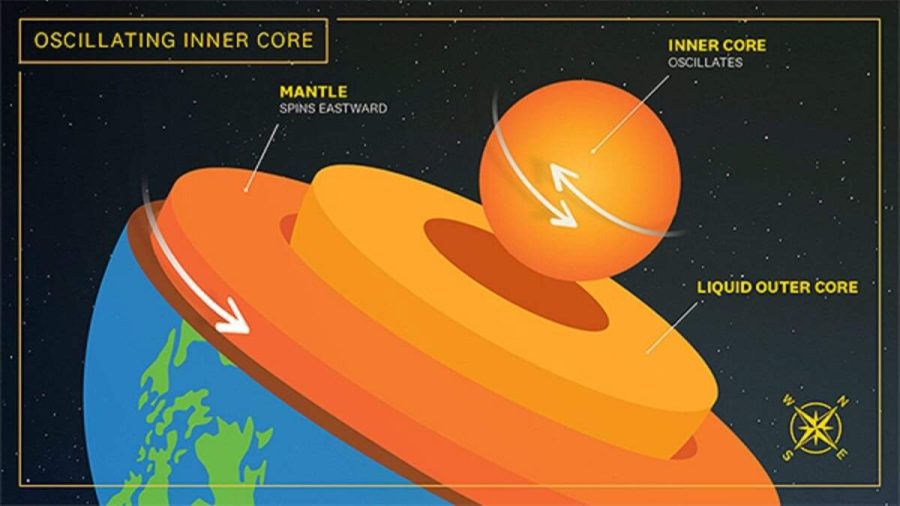Earth’s Core Spinning in Opposite Direction
Image of the Earth’s layers
March 14, 2023
A recent study, published in the Nature Geoscience journal, has shown that the Earth’s core has slowed down and may have started spinning in the opposite direction. The inner core, which is a hot iron ball the size of Pluto, is able to spin independently because it floats in the liquid metal outer core. Exactly how this inner core rotates has been a topic of debate and now this new data is controversial. China’s Peking University researchers, Xiaodong Song and Yi Yang, were authors of the study. Their data shows that the Earth’s core has slowed down or stopped. They discovered that the Earth’s core stopped spinning in 2009 and started turning the opposite way. According to them, the Earth’s core changes the direction of its spin every 35 years. They say the Earth’s core rotates back and forth like a swing, completing a full cycle every 70 years. The next change in direction is set to happen in the 2040s.
The Institute of Geosciences explains that their most recent studies indicate that the Earth’s core would now rotate in the opposite direction. The study also affirms that the Earth’s core is not in step with the rotation of the rest of the layers of the earth. This would mean that the Earth’s crust is moving faster than the earth’s core.
The Earth is made up of different layers like an onion. Phenomena such as earthquakes and eruptions come from the depths of these layers. Researchers use this information as they look for the answers to what is happening with the movement of the Earth’s core. For their studies, researchers look at the Earth’s seismic waves from previous years. They found that 200 earthquakes have happened in Northern Alaska and the southern Sandwich Islands. They then used this data to measure the speed of the waves and the impacts that were felt through the various layers of the earth. This data led to their conclusion that the Earth’s core is slowing down and possibly moving in the opposite direction.
Scientists explain that these findings are important to know about, but they have no effect on the Earth’s crust. People will not be able to feel the change at all. The only effect it could have is changing the time it takes for the earth to rotate on its axis by 0.1 degrees per year. This would slightly lengthen or shorten the day by a thousandth of a second the next year. This change would not affect humans at all because they don’t live long enough for the change to make a noticeable difference. It can make a noticeable difference over a long period of time. For example, according to the Institute of Geosciences, billions of years ago, days on earth lasted about 23 hours and the planet used to rotate a lot faster than it does now.
Even though there are no known effects the movement of the core has on the crust, researchers believe that there are still physical links between all of Earth’s layers. Researchers still have lots of studies to do on the layers of the Earth and the way it rotates.






